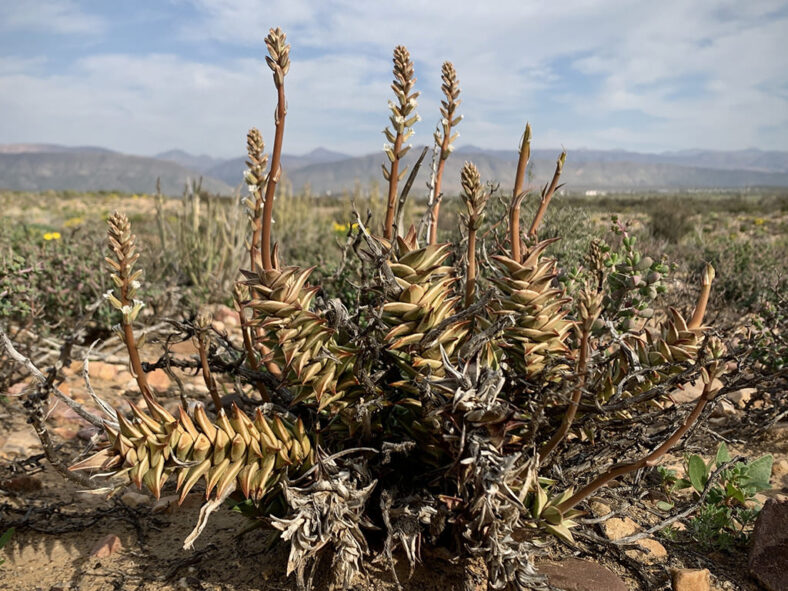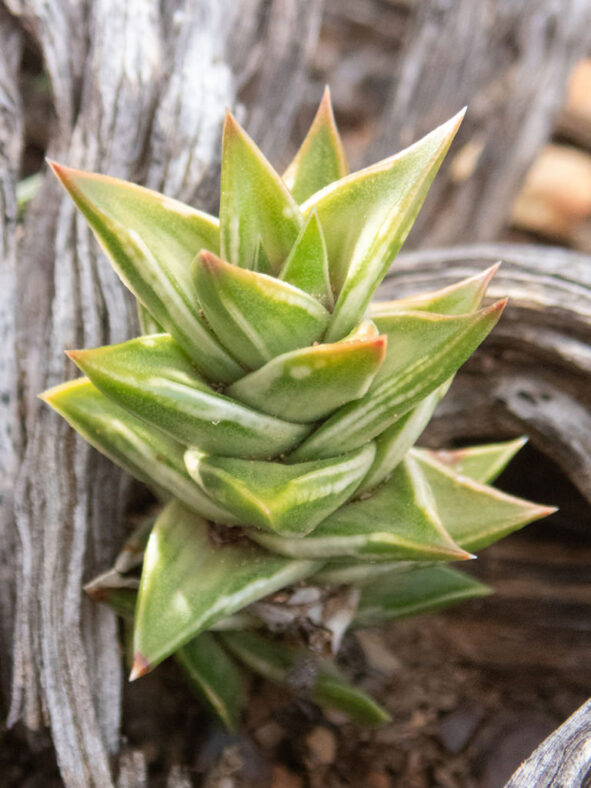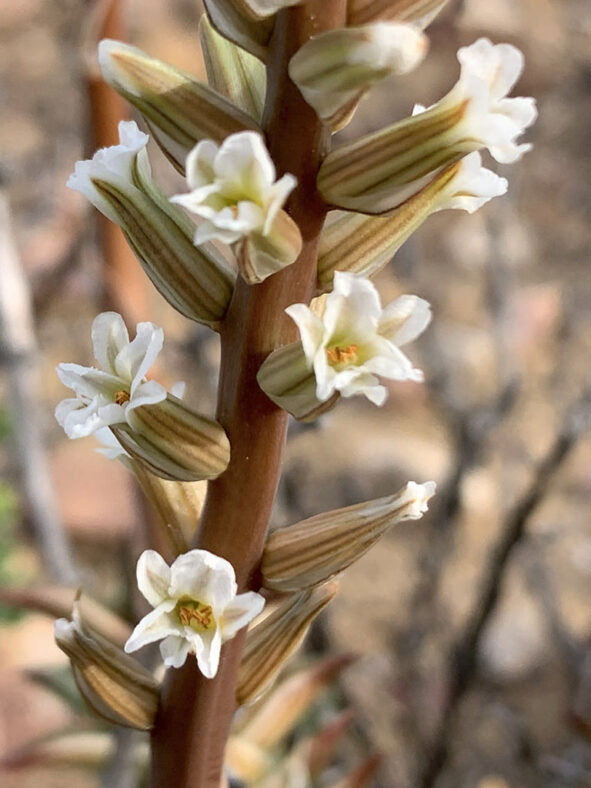Astroloba robusta has the widest distribution within its genus, and it is recognized as a true species of the Great Karoo.
Scientific Name
Astroloba robusta P.Reinecke ex Molteno, van Jaarsv. & Gideon F.Sm.
Scientific Classification
Family: Asphodelaceae
Subfamily: Asphodeloideae
Genus: Astroloba
Etymology
The specific epithet "robusta" (pronounced "roh-BUS-tuh") means "hard, firm, solid, robust" and refers to the short, robust inflorescences of this species.
Origin
Astroloba robusta is native to South Africa. It occurs from Matjiesfontein in the Western Cape to Steytlerville in the Eastern Cape province. This species mostly grows on flat or gently undulating terrain and low, rocky shale slopes. There are also unconfirmed reports of it being found near Fraserburg in the Northern Cape.
Description
Astroloba robusta is a small, slow-growing succulent with narrowly deltoid leaves arranged in five, usually spirally-twisted rows along slender stems. Initially, this plant grows solitary, but as it matures, it produces offsets from the base, forming small clumps. The stems can be erect or suberect and may become decumbent over time, reaching lengths of up to 16 inches (40 cm). The leaves can be as long as 1.6 inches (4 cm) and 1 inch (2.5 cm) wide. They are dark green with grey or brown hues and usually have a distinctly glossy sheen. Under full sun exposure, the leaves turn gray-brown. Occasionally, they have white, elongated spots or tubercles and faint dark striations near the tips. The keels and margins of the leaves are cartilaginous and usually white.
Flowering usually occurs from winter to mid-spring. Astroloba robusta produces tubular flowers with white lobes arranged spirally in robust, unbranched inflorescences. The inflorescences can grow up to 25 inches (50 cm) long, typically between 4 and 12 inches (10 and 30 cm). The fruits are ovoid, pale glaucous-green, trilocular capsules that contain dark brown to black seeds. They can grow up to 0.4 inches (1 cm) long and 0.5 inches (0.5 cm) in diameter.

How to Grow and Care for Astroloba robusta
Light: Astroloba robusta thrives when provided with some protection from direct sunlight. If it has spent the winter indoors, gradually move the plant outdoors into the bright sunlight to prevent sunburn.
Soil: This plant prefers well-draining soil and does not like its roots to remain wet for prolonged periods. You can use commercial soil for succulents or make your own potting mix.
Temperature: Astroloba robusta tolerates warmer temperatures in the summer but prefers cooler temperatures in the winter. It grows best in USDA Plant Hardiness Zones 10a to 11b, with average minimum winter temperatures ranging from 30°F to 50°F (-1.1°C to 10°C).
Watering: Water the plant thoroughly during its most active growth periods in spring and fall. Wait until the top of the soil dries out before watering again. Reduce the watering frequency when the plant's growth slows significantly in winter. When the plant is mostly dormant in summer, water it just enough to keep the leaves from shriveling.
Fertilizing: Although Astroloba robusta does not require much fertilizer, feeding it can encourage optimal growth. Use a water-soluble fertilizer only during the growing season.
Repotting: This plant can remain in the same pot for several years. To keep it healthy and happy, repot it into fresh soil every two to three years, ideally in spring or fall.
Propagation: Astroloba robusta can be easily propagated by offsets and cuttings, but can also be started from seeds. Remove the offsets and take cuttings during the growing season. Sow the seeds in spring or fall.
See more at How to Grow and Care for Astroloba.
Toxicity of Astroloba robusta
Astroloba robusta is considered non-toxic and safe around kids and pets.
Links
- Back to genus Astroloba
- Succupedia: Browse succulents by Scientific Name, Common Name, Genus, Family, USDA Hardiness Zone, Origin, or cacti by Genus
Photo Gallery
Click on a photo to see a larger version.


